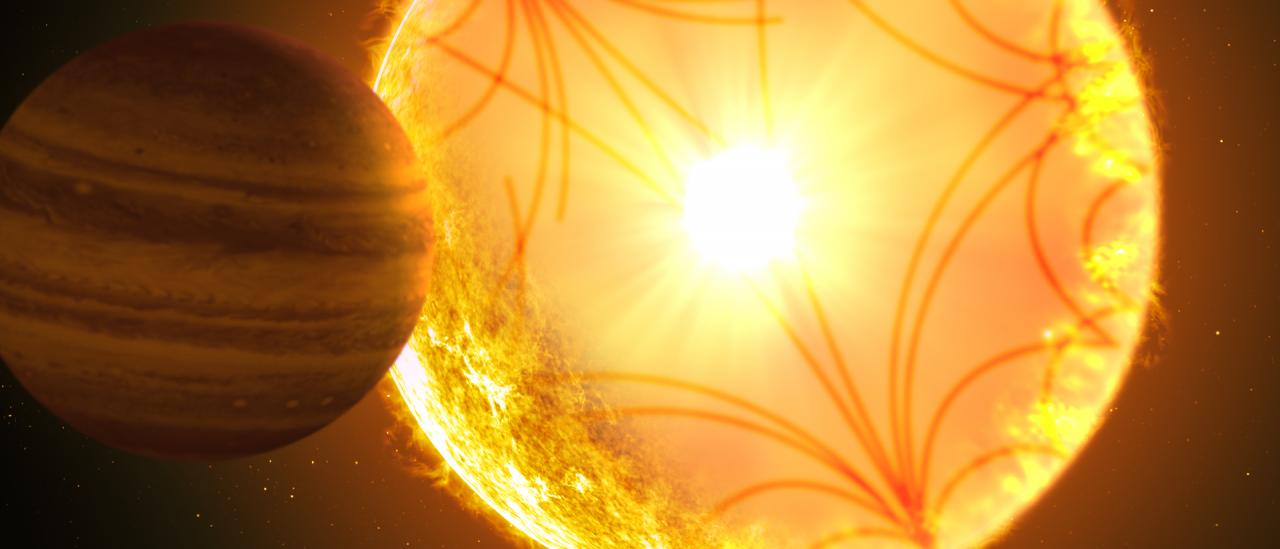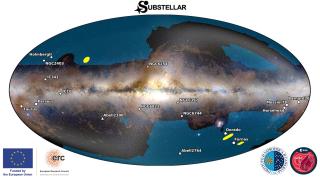General
Los objetivos genéricos de este Proyecto son: 1) el estudio de la estructura y dinámica del interior solar, 2) la extensión de dicho estudio al caso de otras estrellas, 3) la búsqueda y caracterización de planetas extrasolares por métodos fotométricos (principalmente mediante el método de tránsitos) y espectroscópico (variaciones en la velocidad radial de la estrella) y 4) el análisis de las atmósferas de estos planetas.
Para el primer objetivo se utiliza la heliosismología tanto global (la que se obtiene de los modos propios de oscilación) como la local (que deriva del estudio de ondas viajeras). La sismología solar permite inferir de modo preciso información acerca de la estructura y dinámicas internas del Sol. El presente proyecto cubre las distintas facetas necesarias para alcanzar dicho objetivo, desde la instrumental, pasando por la observacional, técnicas de reducción, análisis e interpretación de los datos, así como el desarrollo de técnicas teóricas de inversión y elaboración de modelos de estructura y evolución.
Por otro lado, la astrosismología pretende obtener un conocimiento similar en otras estrellas. Hoy en día esta rama de la astrofísica está produciendo un gran número de resultados gracias a la enorme cantidad de estrellas observadas por las misiones espaciales CoRoT, Kepler y TESS, siendo posible extraer información sobre la estructura y dinámica de cientos de estrellas, tanto de tipo solar como de gigantes rojas. Todo ello se verá complementado con el desarrollo de la red SONG (Stellar Observations Network Group), una batería de telescopio en Tierra dotados con espectrógrafos.
La estrategia de utilización de tránsitos planetarios para descubrir la existencia de planetas alrededor de otras estrellas, consiste en la detección fotométrica de disminuciones de brillo de una estrella cuando uno de sus planetas está pasando entre ella y el observador. Actualmente esta metodología es la preferida para la investigación de planetas pequeños, no sólo por su sensibilidad sino también porque permite llevar a cabo estudios relativamente detallados de los planetas descubiertos. Esta tecnología es similar a la que se utiliza en helio y astrosismología por lo que se puede entender como una extensión lógica de lo aprendido con los anteriores objetivos. Por otro lado, es importante desarrollar algoritmos y métodos observacionales para la detección inequívoca y el análisis de los planetas, distinguiéndolos de los que resultan ser falsas alarmas.
El panorama actual para los estudios de exoplanetas involucra nuevas misiones espaciales como CHEOPS y TESS que serán seguidos por JWST y en 2026, PLATO. Por lo tanto, se abre una ventana temporal en la que los observatorios terrestres pueden complementar estos datos. Para ello seguimos llevando a cabo observaciones usando principalmente TNG, NOT, GTC.
Miembros
Resultados
- Miembros del grupo (P. G. Beck, H. Deeg, S. Mathur, F. Pérez, C. Régulo) estuvieron involucrados en el descubrimiento y caracterización de un "Saturno caliente" que hospeda la estrella HD 89345 observada con la misión K2 y confirmada con medidas de VR. El análisis sísmico permitió obtener estimaciones precisas de los parámetros estelares.
- P.G.Beck dirigió dos artículos sobre binarias con gigantes rojas, usando técnicas astrosimológicas para mejorar la comprensión de su estructura y efectos de marea. También se estudio la mezcla de material en su interior midiendo abundancias de Litio.
- S. Mathur participó en el análisis del primer planeta descubierto por la misión TESS, que orbita la estrella Pi Men. El análisis sísmico condujo a una detección marginal pero dió una pista del potencial uso de la astrosismología con TESS (Gandolfi et al. 2018).
- Proyecto "Solar-SONG". Por vez primera se ha utilizado instrumentación estelar (espectrógrafo SONG) para obtener medidas precisas de la velocidad radial del Sol con alta cadencia temporal (4 s.) y duración suficiente (57 días consecutivos) como para permitir el estudio detallado del espectro de oscilaciones (modos-p) y obtener sus parámetros globales
- Los investigadores Hans J. Deeg y Juan Antonio Belmonte coordinaron la edición del libro "Handbook of Exoplanets" con 160 artículos y la participación de más de 300 especialistas. Tres años de trabajo resultaron en una colección completa y actualizada del estudio de los planetas más allá del sistema solar.



